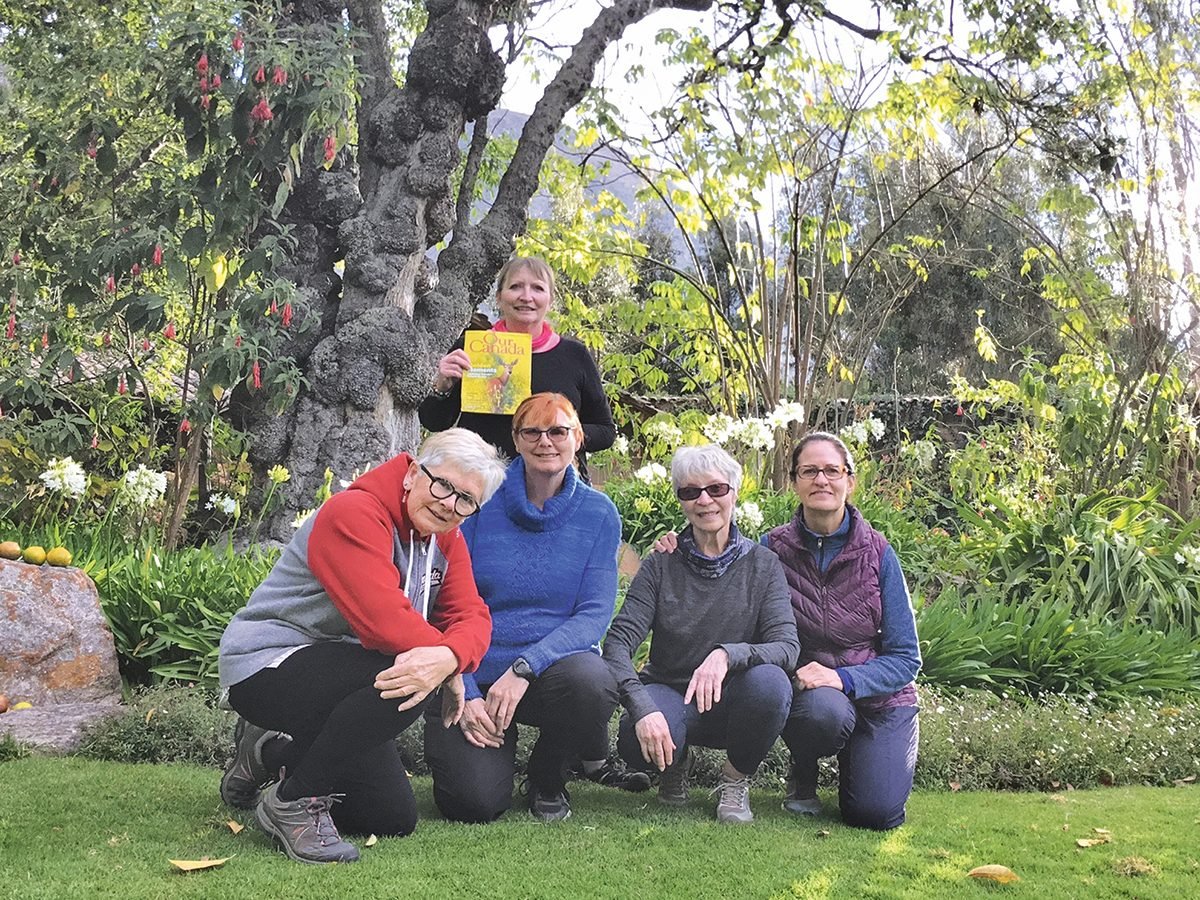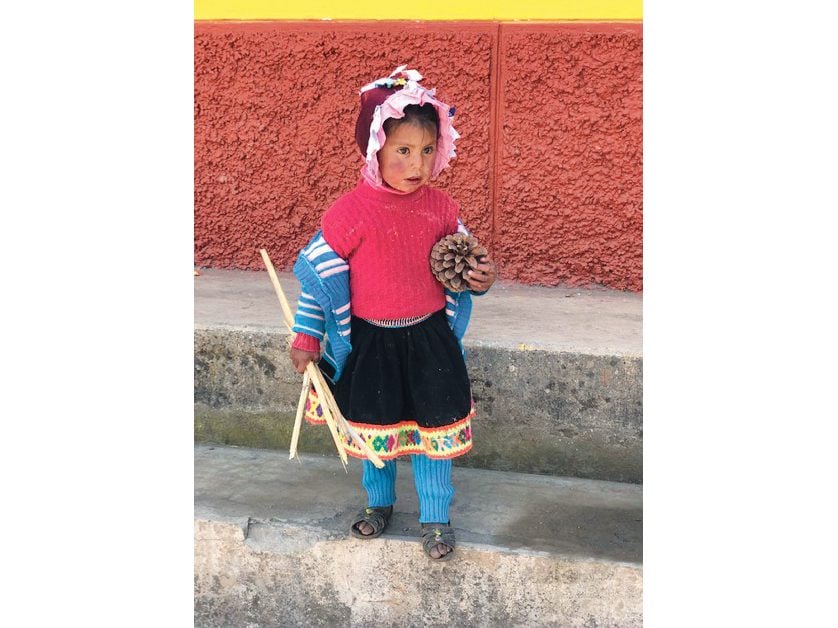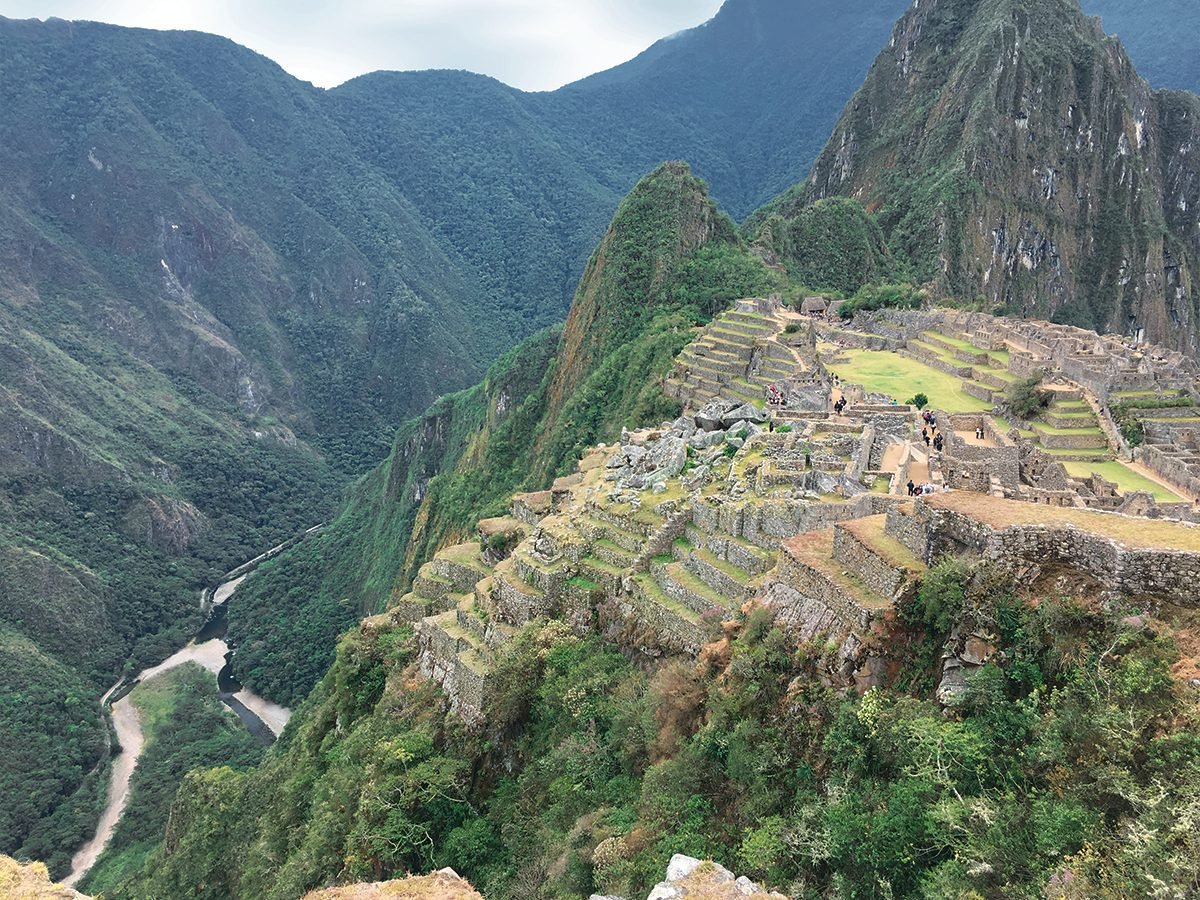
Trip of a Lifetime
On August 27, 2019, seven adventure seekers boarded the first leg of our journey from Vancouver Island, taking us to Peru, South America. Our group consisted of my lifelong friend Susan—both of us now yoga instructors and owners of Ananda Yoga Adventures—and five good friends: Adam, Corinne, Janet, Lori and Jeannette. After months of planning, we were finally on our way!
Twenty-four hours and four airports later we landed in Cusco, Peru, a city of one million people. Coming from Vancouver Island, where we live and which is only 100 feet above sea level, we honoured the fact that we were now at a much higher altitude—over 11,000 feet—and needed time to adjust to the scarcer oxygen levels! We heeded the advice of other travellers and the locals: drink lots of coca leaf tea and rest for a couple of hours before any activity. But we were soon hiking through the history-steeped ruins of Cusco and surrounding ancient citadels. Leaving Cusco the next day, we stopped at the Moray Ruins, which were used for farming and ceremonies by the Incas. Their size and unique layout should be considered a lesson in historical engineering genius. (Check out these other unforgettable ways to feel small next to nature.)
Arriving in the beautiful Sacred Valley, we stayed at Willka T’ika for the next week. This resort is incredible, with seven Chakra Gardens, filled with thousands of constantly blooming flowers. We enjoyed delicious vegetarian meals, all made with local produce and prepared by the hands of loving Quechua people to whom the Sacred Valley is home. Practicing yoga in this sacred place was an unparalleled experience, as was spending reflective, soul-healing time at the foot of the thousand-year-old Lucuma Tree, believed to be growing at the heart of Mother Earth.

Exploring the Sacred Valley
We managed to explore just a few of the 480-plus archaeological sites within the Valley. The steep, crop-growing terraces and man-made aqueduct systems were yet another example of the hard work and creative engineering of the Incas. When the Spanish conquerors arrived in the early 1500s, the Inca families worked frantically, burying their crops, idols and artifacts to protect their knowledge and way of life. Each terrace was meant for a specific crop, creating its own micro-climate, with corn and quinoa being the staples. Recovered evidence shows the Andean culture worshipped the elements to express gratitude and ask for healthy crops, as the Quechua people still do today: Pachamama (Mother Earth), Apu (the mountains), Father Sun and The Waters.
A special experience was visiting a Quechua children’s school, high in the mountains (above), where we were welcomed with songs, games and a snack of ground-roasted potatoes, their staple crop at that elevation. Our driver brought a bag of oranges for the children and they were so grateful for the treat!
Local food in the Valley is fresh, incredibly tasty and full of nutrients. We were fed well but declined one local specialty known as cuy—roasted guinea pig. A couple of us are vegetarian, but even the meat-eaters graciously declined that cute morsel!
Check out these destinations worth visiting for the food alone.

The Mystery of Machu Picchu
You can’t go to Peru without visiting historic Machu Picchu. The “road” up to the ruins consists of an endless series of death-defying switchbacks with steep drop offs, resulting in knuckle-whitening cold sweats. It was worth the adrenaline ride though, as we walked through the ruins pondering the mystery surrounding what happened there. Evidence left behind suggests a sudden, hasty retreat. Perhaps Spanish conquerors discovering them? Fleeing an earthquake, perhaps, in spite of the quake-proof architectural structure of the city? Or an extraterrestrial event—a popular theory, explaining how 20-ton stones were moved, in those times, from one mountain to the next for use as ceremonial altars? (Check out more fascinating Machu Picchu facts most people don’t know.)
Susan and I decided to hike to the Sun Gate, a daunting climb from the city ruins on part of the Inca Trail. Built by the Incas around 1100 AD, the trail is a seemingly unending series of uneven, hand-carved stone steps with blood-curdling hairpin turns and steep drop offs. But the view was worth it!
Too soon, it was time to leave Peru. We learned so much—the unique, incredible history of Inca, Quechua and Spanish culture, and especially the earth-nurturing agricultural methods still widely practised. The best thing we took away was how simple, kind and caring the people are and how deeply they love the earth, each other and everyone they meet. We vowed to be more mindful and tread more carefully, upon returning home to Vancouver Island.
Planning your own trip? Take inspiration from our countdown of the 20 best things to do in Peru.